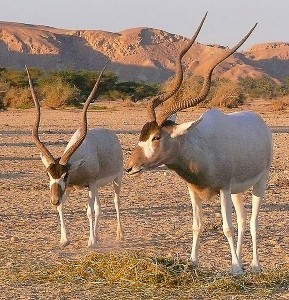We have all heard the activists and politicians who blame “climate deniers” for not supporting public policies that address the alleged man-made causes of climate disruption, despite all the “settled science” that justifies their push to limit our individual freedoms.
Please allow me draw your attention to an example where “settled science” is currently frustrating the efforts of wildlife activists who are trying to create effective public policy. And it involves their deep romance with the mustang herds that roam the vast American West.
First, some quick background: I stated in an earlier blog post regarding the Endangered Species Act (ESA) that even though a majority of scientists consider the existing biological taxonomy of wildlife as settled science, some scientists disagree as to what exactly defines a distinct species of animal or plant life.
What is wrong with ignoring the critics of “settled science” for deciding what constitutes a “species” when designing effective wildlife policy?
If two very similar types of animals were incorrectly considered separate species when in reality they were biologically identical, the potential elimination of one animal type while the other animal type continues to thrive is not likely to create a meaningful loss to the larger ecosystem.
If you fail to recognize that two similar looking animal types were truly two distinct species, then allowing one type to disappear as long as the other type is thriving may well damage our larger ecosystem. It is important to not make either mistake.
But what is wrong with assuming that choosing more definitions of species is better than choosing fewer when making policy?
As I discussed in yet another blog post, when a given animal species is considered endangered under the ESA, a private land owner or a lessee of federal lands could be required to endure significant economic losses to preserve the natural habitat of this endangered species. These very real and personal economic losses are never discussed when the federal agencies tabulate their costs for enforcing the ESA.
Well, wouldn’t a federal agency directed by a representative democracy make sure that any individual economic sacrifice be required only to prevent a real threat to our ecosystem?
Perhaps, but it is in any wildlife management agency’s best interest to sidle up with wildlife activists to define a “species” as narrowly as possible. This maximizes the opportunities to exercise control over private land owners and federal land lessees, which would then justify their growing mission and budget needs.
Surely you are being overly pessimistic!
Back to the lead story: A recent development regarding activists concerned about the dwindling herds of wild horses roaming the American West is clearly justifying my fears.
Most land owners or federal land lessees in the western states see wild horses as a nuisance animal, much like feral dogs that terrorize an urban neighborhood or feral hogs that destroy golf courses and farm lands. These folks even organize annual round-ups to limit the damages arising from these herds, paying the participants with the very horses they catch.
However, supporters of these wild horses see them as mustangs. They are romantic, living mementos of a defining era in American history (and I admit that I share that perspective). Yet, these mustang activists are seeking explicit protection of these wild horses under the ESA. I just cannot support that approach. It involves manipulating science for the sake of romance.
You see, the ESA empowers various federal agencies to severely restrict the individual liberties of private land owners and lessees of federal lands — but only if such restrictions are a necessary consequence of protecting and preserving an endangered species of wild animal or plant life. In other words, an entire native species must be at risk before this act can be invoked.
As I predicted, mustang activists are lobbying the federal government to deny settled science in defining what constitutes a native species. As AP reporter Scott Sonner notes:
Efforts to halt mustang roundups in Congress and the courts have been unsuccessful over the past decade, but two groups in a petition to the U.S. Fish and Wildlife service are focusing on genetics and research they say prove the (wild) horses are a native species. They say growing threats from development, livestock grazing and government gathers are jeopardizing the genetic viability of individual herds in 10 states from California to Montana.
Jeopardizing the “genetic viability” of a specific herd comprised of a species that exists abundantly elsewhere does not create the same threat to our ecosystem that jeopardizing an entire species would create. You see, the meaning of biological definitions really does matter for making good public policy.
Today, most of the scientific community considers both domesticated and wild horses as a single species, known as equus ferus. Mustangs are simply considered invasive, feral horses that were introduced to the American West by humans. Defining both wild and domesticated horses as a single species was legitimated by the International Commission on Zoological Nomenclature in 2003. In other words, this biological species definition is “settled science.”
Yet, mustang activists think the federal definition of “species” should ignore settled science and divide horses into two separate species: wild and domesticated. Their motive does not appear to be promoting scientific clarity over biological taxonomy. Instead, after failing to convince a representative democratic governments to create legislation strong enough to preserve our dwindling Mustang herds, these wildlife activists are willing to deny “settled science” for effective political maneuvering.
It seems that when it comes to that great American icon, the noble mustang, wildlife activists are happy to be “settled science” deniers too.
![800px-Oryx_dammah_-Marwell_Wildlife,_Hampshire,_England-8a[1]](http://environmentblog.ncpathinktank.org/wp-content/uploads/800px-Oryx_dammah_-Marwell_Wildlife_Hampshire_England-8a1-300x200.jpg)
![753px-Mhorr_Gazelle,_Zoo,_Budapest[1]](http://environmentblog.ncpathinktank.org/wp-content/uploads/753px-Mhorr_Gazelle_Zoo_Budapest1-300x239.jpg)
